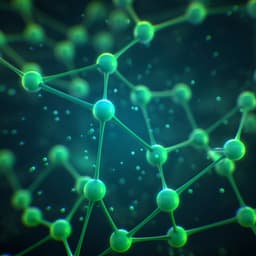
Engineering and Technology
Potentiodynamic polarization curves of AA7075 at high scan rates interpreted using the high field model
H. Zhou, D. Chhin, et al.
This groundbreaking study by Hu Zhou, Danny Chhin, Alban Morel, Danick Gallant, and Janine Mauzeroll delves into the intriguing behavior of potentiodynamic polarization curves of AA7075 aluminum alloy at high scan rates, revealing insights that challenge conventional beliefs on distortion causes and emphasize the influence of anodic oxide growth kinetics.
Playback language: English
Related Publications
Explore these studies to deepen your understanding of the subject.







